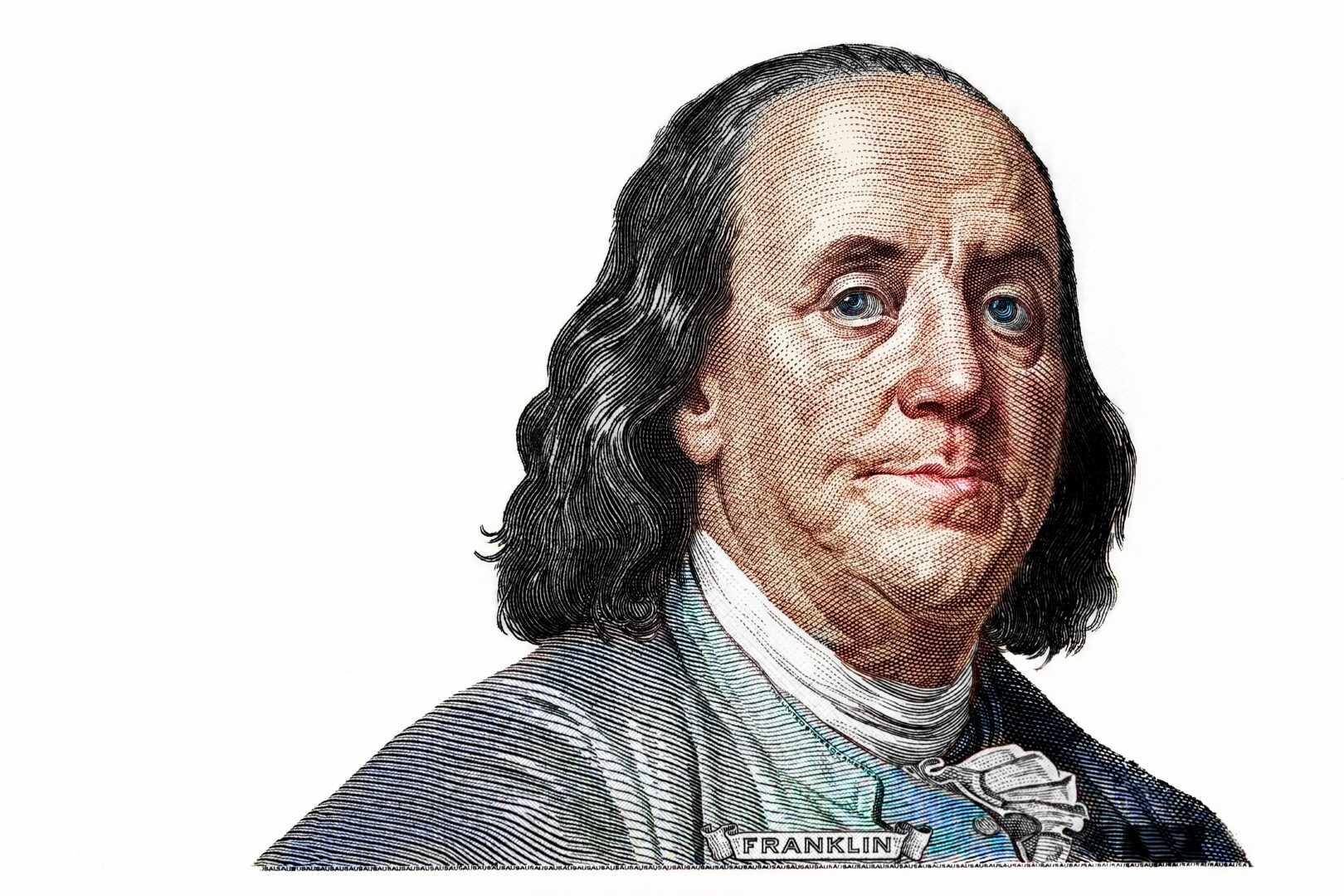
Benjamin Franklin cut on new 100 dollars banknote isolated on white background

Benjamin Franklin cut on new 100 dollars banknote isolated on white background

Benjamin Franklin cut on new 100 dollars banknote isolated on white background
Airdate: October 9th, 2023
Last Friday was the 300th anniversary of Benjamin Franklin arriving in Pennsylvania. Franklin set foot in Philadelphia October 6, 1723 arriving from Boston. The then 17-year-old got three loaves of what he called “puffy buns” and set off through what would be his adopted city.
That began a life that would not only have a great impact on Pennsylvania and what eventually became a new nation, but the world.
The Pennsylvania Historical and Museum Commission is commemorating Franklin contributions with displays at the State Museum of Pennsylvania and the Governors Residence in Harrisburg.

APS photo
On the back of this letter, Benjamin Franklin figured out the exact date he arrived in Philadelphia — October 6, 1723. The discovery was made in 1980. The letter is in possession of the American Philosophical Society.
We’re joined on The Spark Monday by Curt Miner, Chief of Interpretation for the PHMC and David Gary with the American Philosophical Society in Philadelphia, who told us how Franklin’s arrival date was only discovered in 1980 on the back of a letter,”We know that from a letter from a batch of scrap notes that Franklin wrote on the back of a letter that his French banker sent to him in November of 1783. You can see the scratches. It’s a columns of numbers and some abbreviated place names. And in 1980, someone from Yale published Benjamin Franklin papers came to the APS, has to look at this document, read the French letter about banking regulations, turned it over and saw these scratch notes, and was able to interpret what they really meant. It starts September 25th in Boston, and then it rolls down at the bottom. You see Philadelphia. He arrives on October 6th, 1723.”
Miner said that Franklin was a man of many interests and he tried to improve upon what was already known,”That was a word he used. It was improvements. We often think of Franklin as an inventor, and that kind of conjures up someone sort of sitting alone in a room studying. And he certainly did that. But he was out in the world and he was identifying problems that needed to be solved in what would become this new young nation, then a colony. Of course, what we found interesting when you look at Franklin that way, you see, traditional narratives of his discovery of electricity and the kite and lightning were those are interesting and important. But what was his aim ultimately? Well, can I discover something useful that can be applied? And what we have found in our own collections is a humble iron, sharp pointed lightning rod. That was the outcome of Franklin’s experiments with electricity and the practical application. If I can attract lightning from the sky, from the cloud, as he would say, and put it on top of a building at its highest point, I can save a lot of these structures, which were all wooden structures in colonial Philadelphia from burning to the ground. One of his great practical applications from the 1750s.”

Spectacles, including bifocals, invented by Benjamin Franklin that are part of the PHMC display.

A Franklin stove that is part of the Franklin display.
The days of journalism’s one-way street of simply producing stories for the public have long been over. Now, it’s time to find better ways to interact with you and ensure we meet your high standards of what a credible media organization should be.